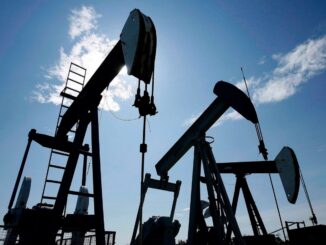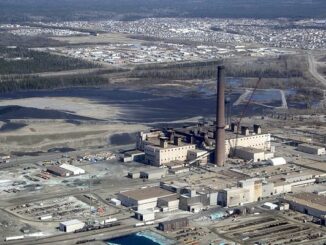
Ryan Maue is a US weather and climate guy. From early last week he was forecasting the incoming polar vortex would bring abysmal cold to virtually all of North America. Unlike climate activists, he’s not an alarmist except when as he jokingly put it, the real ‘climate emergency’ that would unfold would be temperature in the minus 40s — which is the same in Celsius and Fahrenheit — and colder!
That’s exactly what happened in Alberta on January 12, 2024. The polar vortex moved in and settled over most of the prairies and Northern BC and temperatures dropped like a stone. Maue checked in on “our Canadian friends” in Edmonton, reporting on Jan. 12th at 10:30 reporting: “Bit of a struggle today with the temperature. Currently -48°F (-44 C) with a wind chill of -67°F (-55C).”
The magical thinking of climate activists has been to replace fossil-fueled electrical power generation along with fossil-fueled cars and trucks with renewables and batteries instead, including EV vehicles. Furthermore the climate activists also want to decarbonize home heating, by switching from natural gas to electrical heating or heat pumps.
January 12, 2024, is the day decarbonization died in Alberta.
People with EVs were caught out as the cars couldn’t hold a charge and could only get half the range, as Global News reported.
As Brian Zinchuk of Pipeline Online reported, wind farms in Alberta quietly all went to sleep as temperatures hit minus 30C the night before. Why? Because in extremely cold weather, infrastructure like wind turbines with exposed blades and internal mechanics way up high face the risk of embrittlement and… shattering. Even though there was some wind, the risk was too great to continue operations, meaning that almost all of Alberta 4481 MW of wind power became useless. About that same time, the sun went down. Meaning that all of Alberta’s 1650 MW of solar power vanished for the night.
Meanwhile, the remaining coal-fired power plants, which have 820 MW maximum capability, have been running flat-out, presently at 817 MW as I write this at 12:14 on Saturday January 13, 2024 — another frosty day in polar vortex deep freeze, with temperatures across the province ranging from minus 40 to minus 50 degrees Celsius.
Last night, a grid alert was posted by the Alberta Electric System Operator (AESO), meaning the system was at capacity.
Grid Alert declared at 4:15 p.m. on Friday, January 12, 2024.
Pool electricity price is $745/MWh
Wind at 8/4481 = 0.18%
Solar at 7/1650 = 0.42%
The alert remained in effect for five hours, meaning the risk of load shedding, brownouts or blackouts was imminent as again, Alberta plummeted into darkness and the coldest temperatures experienced in decades.
Premier Smith and her cabinet put a moratorium on renewables largely because of these kinds of risks. You can read the AESO 2022 Market Statistics report and see that on seven occasions in 2022, the Alberta power grid was in danger of blackout, in all cases, largely because of the sudden collapse of wind and solar during extremely cold weather events.
When you look at the AESO’s list of maximum capability of all sources of power generation, you will find that the maximum capability is 20,777 MW. Yet Alberta topped its previous peak demand record on Thurs. Jan. 11, 2024, about 6 p.m. at 12,384 megawatts. By Friday evening we faced a grid alert. Why? Where were those other 8,000 MW? The answer is that 6131 MW are the unreliable renewables, the 4481 MW wind and the 1680 solar, both of which took a vacation at a critical time.
There is 900 MW pending from the Cascade gas plants which are not fully operational. And hydro almost never can be run at maximum capability in winter due to obvious icy reasons.
Our friendly neighbours and the inter-ties were the stop gap that saved us, despite our neighbours facing the same weather extremes, meaning that we got lucky.
Imagine the deadly outcome if we were to go along with the climate plans to entirely phase-out fossil fuels and rely on renewables.
Imagine the grid demand if every house and heavy industry in Alberta was legislated to be heated only by electricity, not natural gas.
Imagine the collapse of medical facilities if the province faced days or weeks of such a cold snap — which is possible. Just look back at May last year when an omega block parked over Alberta for most of the month driving hot, high winds from the south, and wildfires proliferated.
Imagine that your carbon tax is a useless sacrifice on the altar of Gaia. It’s not going to change the weather, but it will sure make a lot of Albertans suffer from Polar Vortex prices this month, for their carnal sin of wanting to keep themselves alive.
What about the global boiling of last fall? Ryan Maue explains how another natural feature — the El Nino cycle — likely drove that. Though the climate cult doesn’t want to consider that Mother Nature might always have the upper hand.
Decarbonization for Alberta is dead. RIP.



